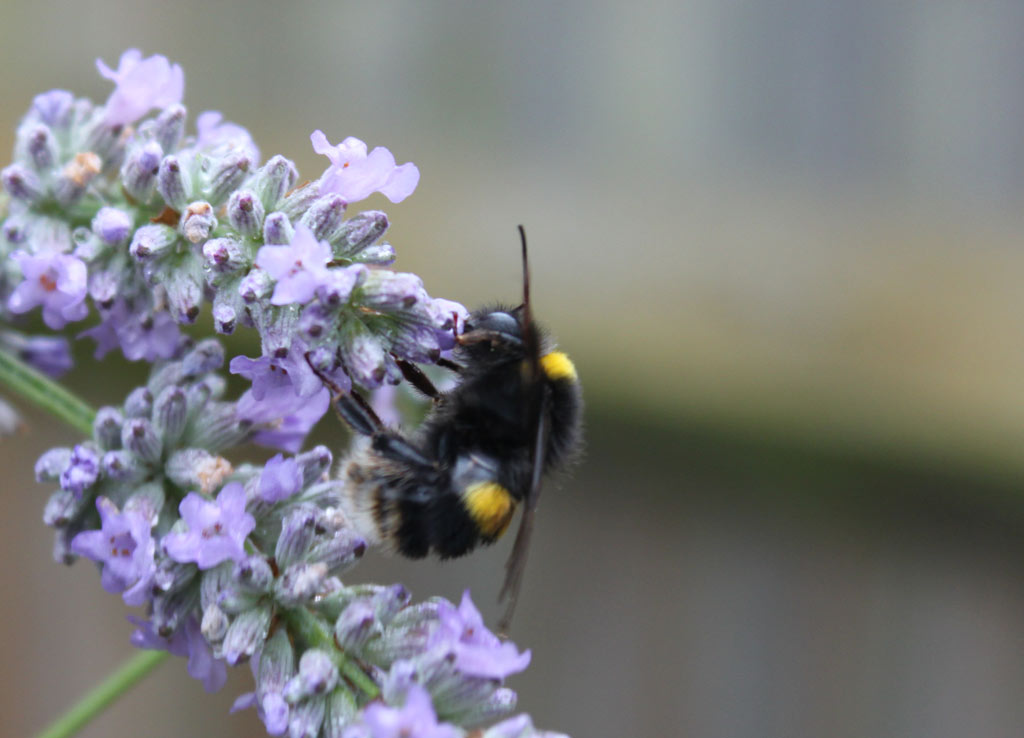
How to attract wildlife into your garden
Attracting wildlife into your garden can help deal with types of pests and increase the diversity of life in the garden. Some methods for increasing wildlife are quite easy.
Bucket of water

This bucket got left under a shrub and was forgotten about until a few years later, when I saw frogs using it as a base. It had filled up with rainwater and was colonised by a few slug eating frogs. Because it is in shade, it doesn’t lose too much water, but in dry conditions, I top it up with water to keep the frogs happy. I also have put a few dead twigs around the bucket, to make it easier for frogs to climb in.
Small pond
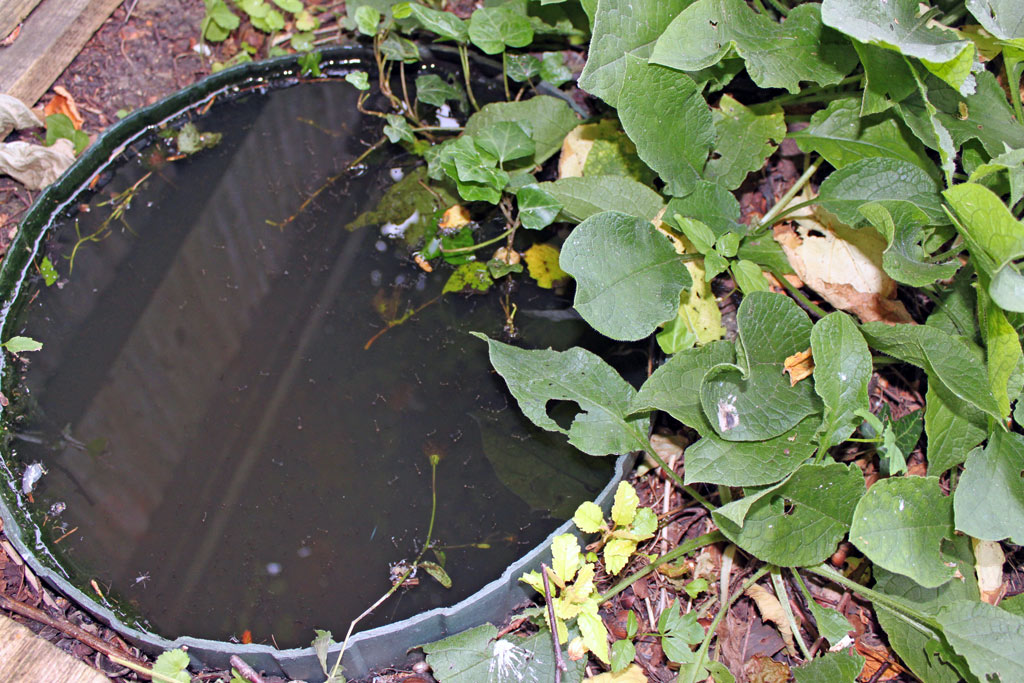
This small pond is actually an old dustbin cut in half and put into the ground. A better solution would have been a bigger pond with sloping edges making it easy for frogs and the like to climb in and out. But, still it provides a home for a few frogs. It is also a drinking spot for birds and other creatures.
Insect hotel
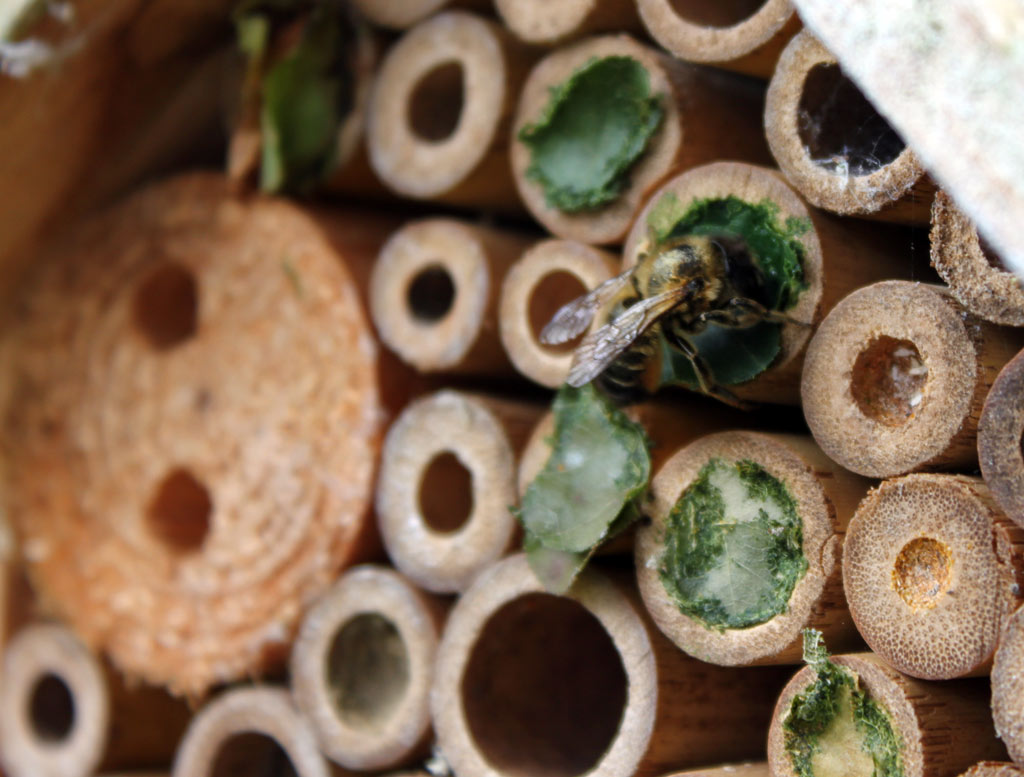
This simple insect hotel has been used by host of bees. They lay eggs in the small holes and then cover up the holes with vegetation. The types of bees that like to use this kind of insect hotel include Red Mason and Leafcutter Bee. The Leafcutter bee is well named as you can see it cutting leafs and using it to block up the holes. They are fascinating to watch.
Insect hotel at Amazon.co.uk
A bee hotel should be placed in a south facing position (or south-east), at least a metre off the ground. The direct sun is important for warming up the bees. I can confirm that a hotel placed in the shade attracted no bees and is more subject to mould.
Insect hotels can also provide resting grounds for ladybirds and butterflies.
Buddleia shrub

Easy to grow, Buddleia provides nectar rich flowers for bees and butterflies. They can easily self-sow, but having 2 or 3 in your garden will provide a long period of flowering. This variety has wonderful purple flowers.
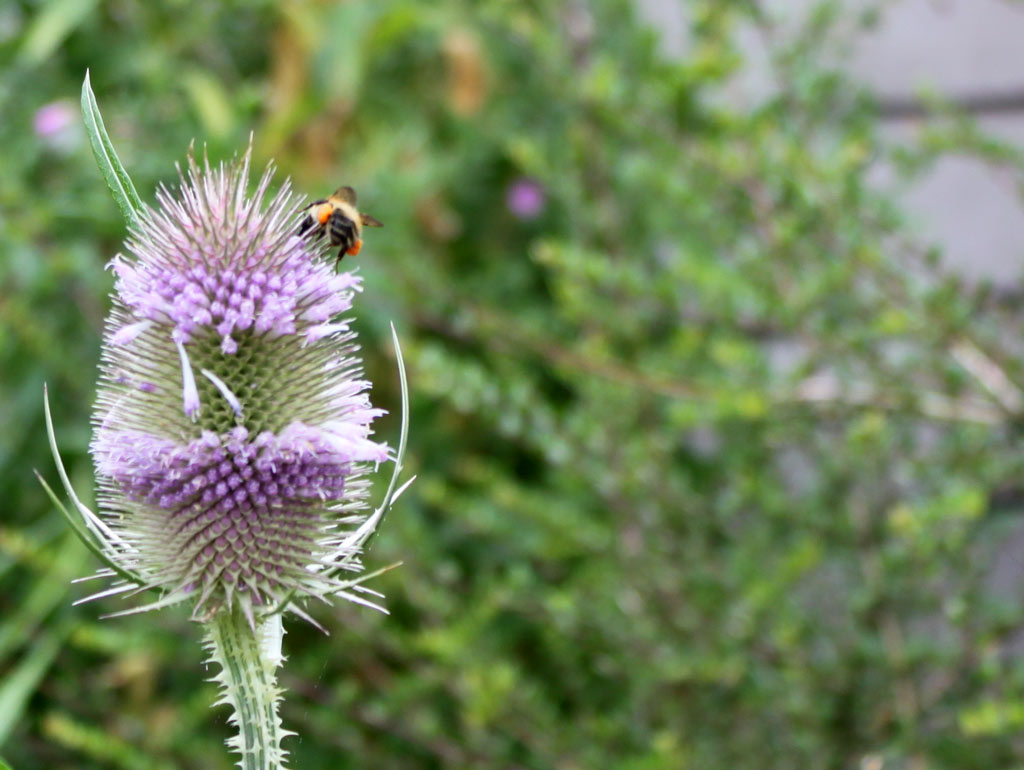
Reclassify some weeds as ‘plants’ These Teasals are self-sown, some gardeners may dislike them in your borders, but they are great for bees, so I like to leave a few – admiring their height and unusual form in a more conventional border.
Terracotta pot with straw underneath.
Growers of Dahlias may use these place a terracotta pot on a cane with straw underneath – they will be attractive to earwigs. If you are a Dahlia grower, you can kill the earwigs, but if you have it near a fruit tree, the earwigs will be good for eating plant lice which can harm fruit trees.
Hedgehog – houses and Water and cat food for hedgehogs.
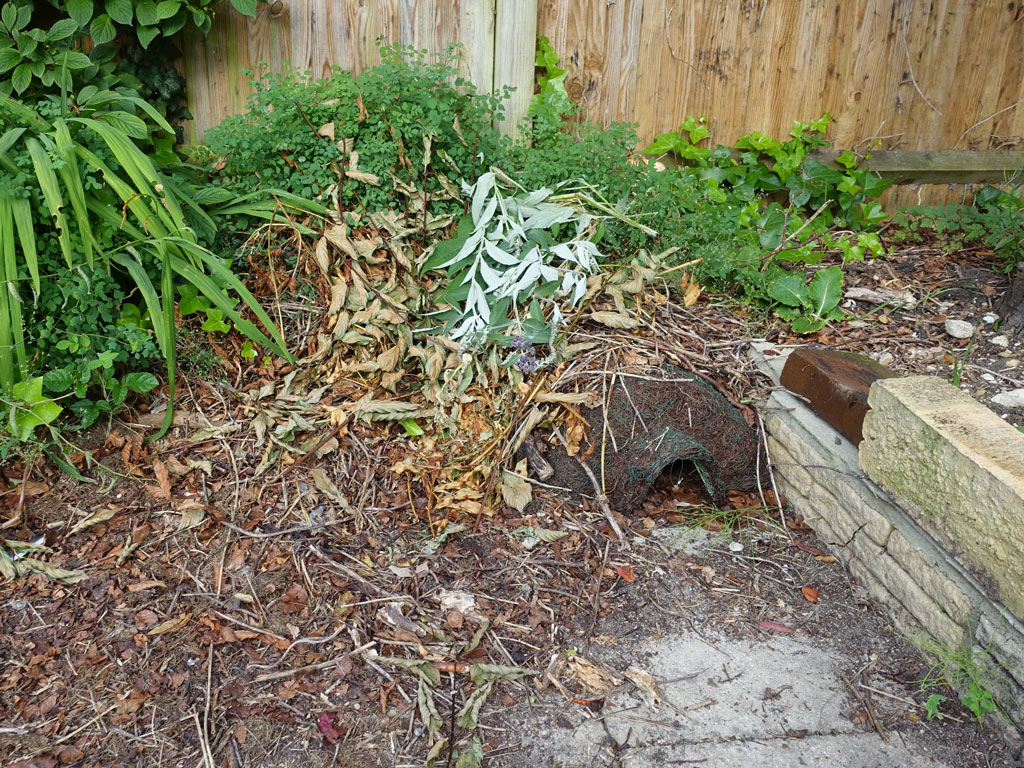
Hedgehogs are declining in number, but they are a real gardeners friend because they can munch through many slugs in one sitting. They can be harmed by slug pellets. But, if you can attract hedgehogs they will do a great job in keeping on top of the slug population. This is a hedgehog house, ideally suited for winter hibernation; I have covered with a few leaves and logs. It is the kind of area of the garden which is good for attracting different types of wildlife.
Variety of trees for birds
Something which is perhaps obvious, but a good range of trees provides secure environment for birds. Unfortunately, if you look at many front gardens, there is a growing preference to cut down trees, reducing safe places for birds. Birds can also be attracted through bird feeders and water tables.
Variety of plants
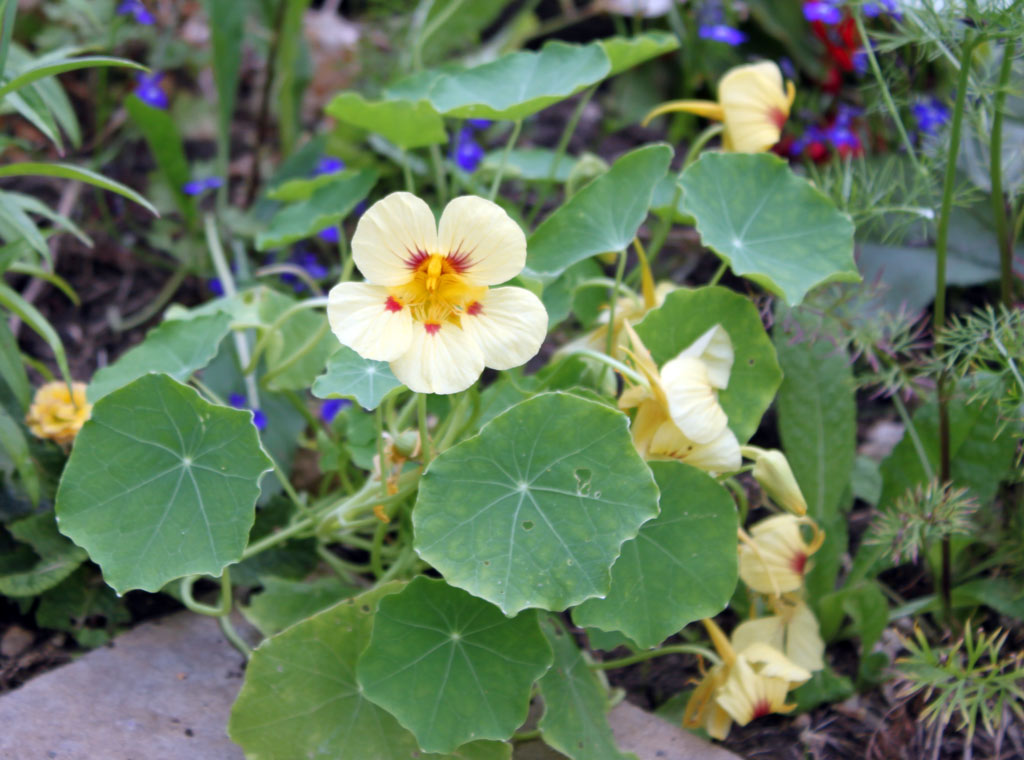
Different insects like different flowers and plants. Here the Nasturtium are popular plants for butterflies to lay eggs. You will get mini caterpillars eating the leaves, but Nasturtiums are robust enough to cope with losing some of their leaves to hungry caterpillars.

Nectar rich plants

This lavender shrub is very popular with bees.
Native wildflowers
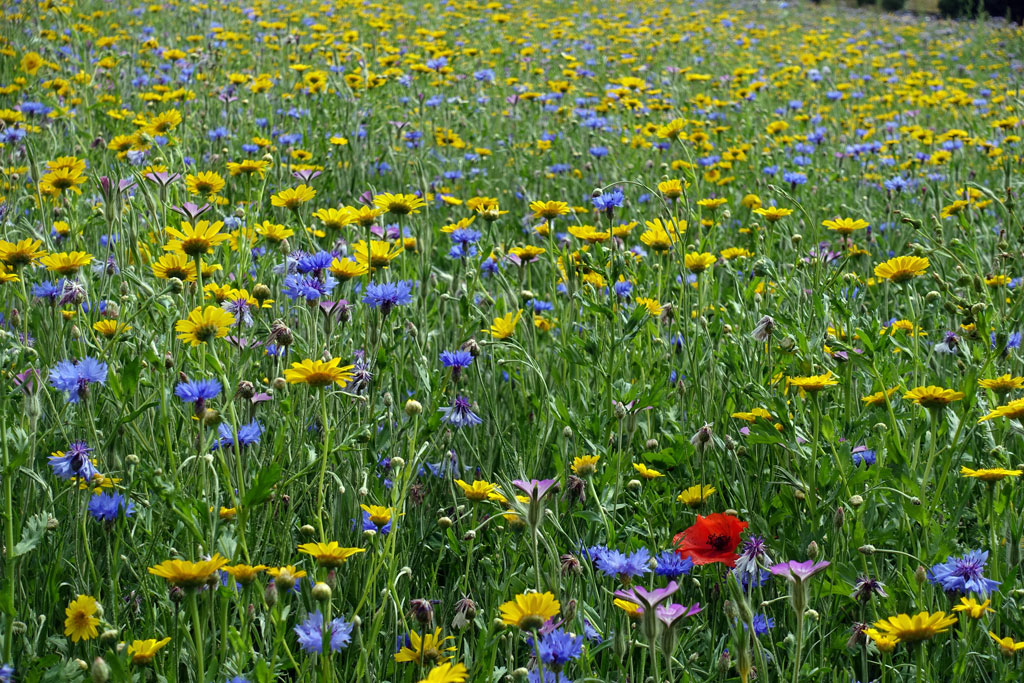
Related
- Photos by Tejvan. See: Wildlife in your garden photos
One thought on “How to attract wildlife into your garden”
Darn good Photos
Comments are closed.